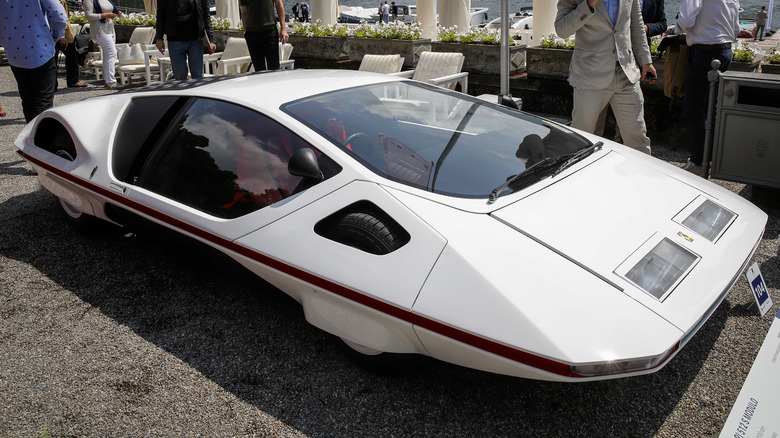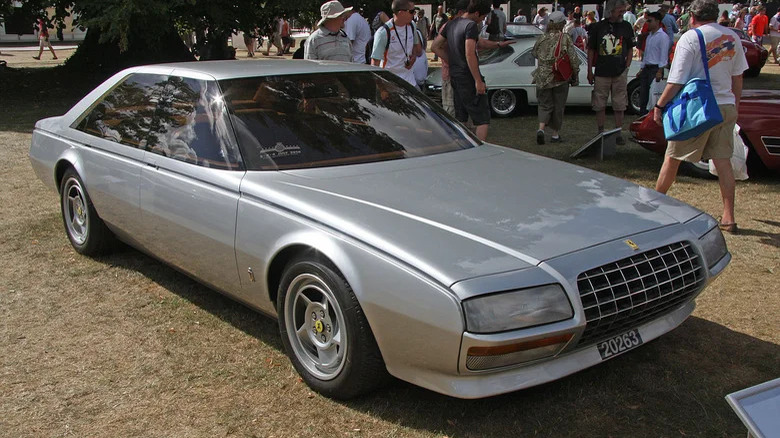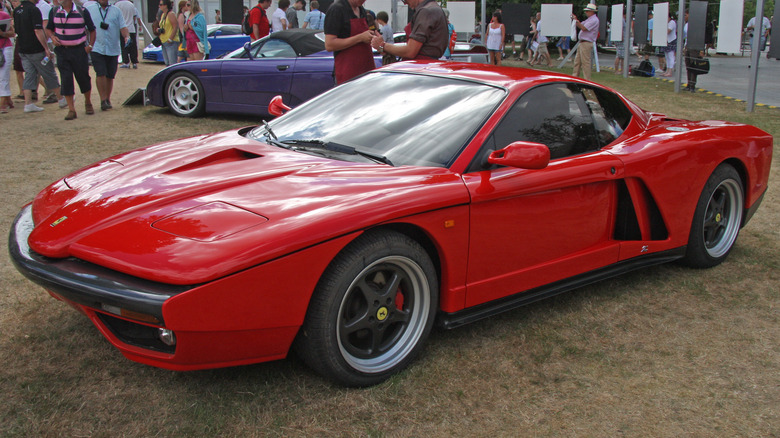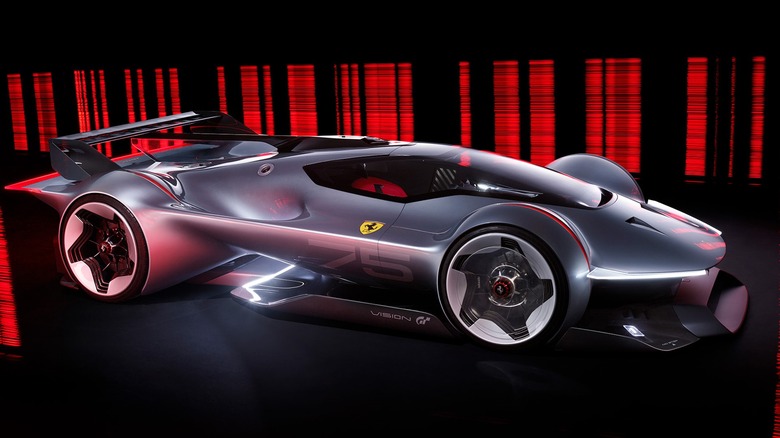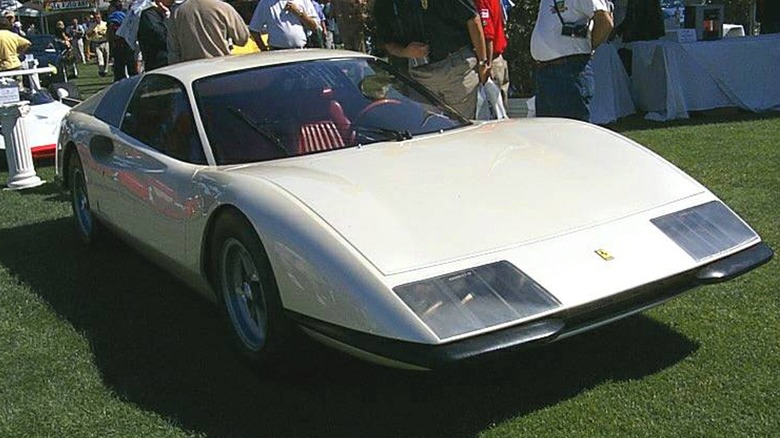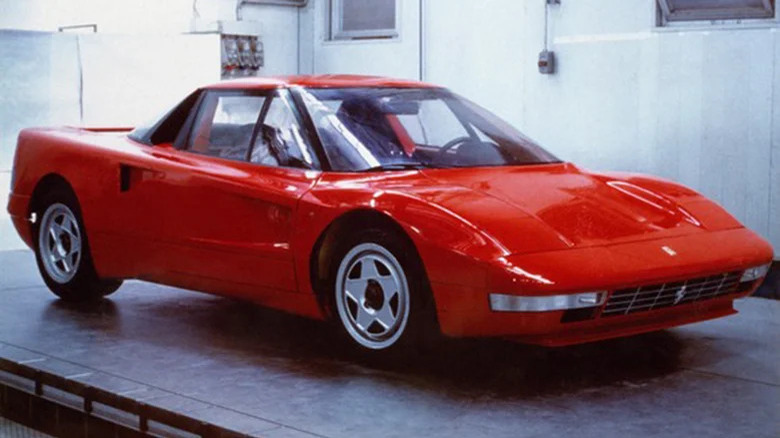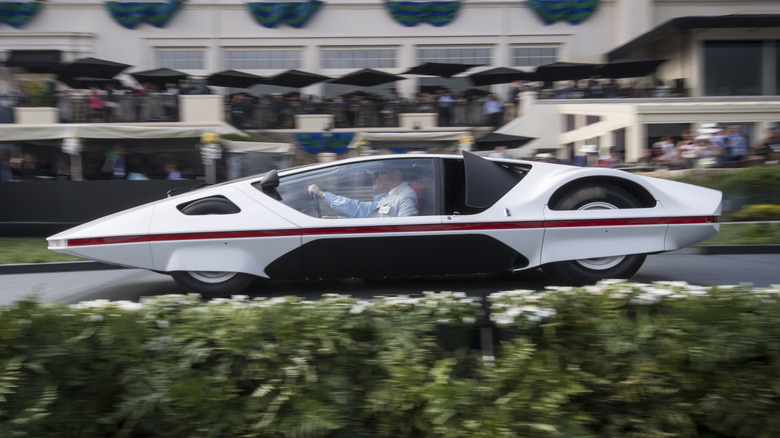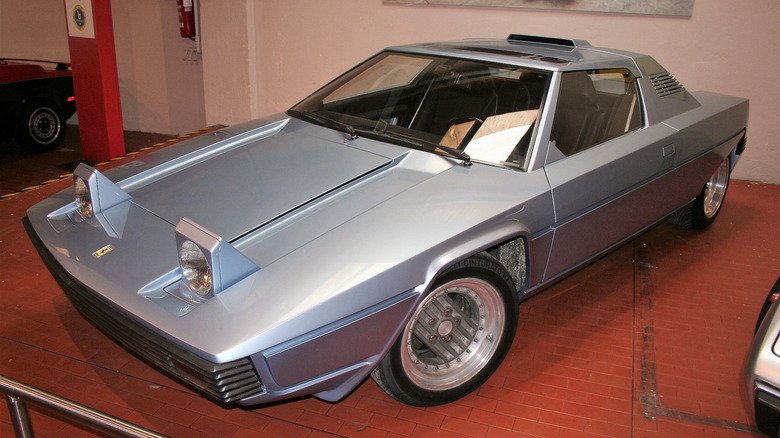7 Ferrari Concepts That Never Made It To Production
Compared to other supercar manufacturers, Ferrari has never been one to dwell too much on its concept cars. While Lamborghini has been keen to show off the likes of the Terzo Millennio and, more recently, the angular Lanzador EV concept as evidence of its future design plans, many of Ferrari's concepts are developed by its design partners as experiments rather than previews of what its future might look like. Like any experiment, some of those are successful and some are less so.
From luxurious limousines to wedge-shaped oddities, there are plenty of Ferrari concept cars that never made it to production. Some were limited by financial constraints, some didn't fit with the brand's other plans, and some simply didn't impress Ferrari bosses enough to get the green light. Whatever the reason they didn't make it off the auto show circuit and into the hands of customers, these largely forgotten Ferrari concepts offer a unique insight into directions the brand might have taken but ultimately decided to consign to the archives.
Ferrari Pinin
The idea of a four-door Ferrari was, for many decades, a bit of an oxymoron. The company was so famously dedicated to making coupes and roadsters that it never dared to deviate too much from its core offerings, not least because of Enzo Ferrari's disdain for doing so. That all changed with the launch of the Purosangue, but there was nearly a four-door with a Prancing Horse badge four decades before the introduction of the SUV. Designed by Pininfarina to mark its 50th anniversary, the Pinin was completely unlike any other Ferrari before.
It was low-slung and had a V12 under the hood, but that was where most of the similarities ended. This new car featured a futuristic, tech-heavy interior, unique tail lights that matched the color of the bodywork, and, most importantly, an extra pair of doors. Unveiled in 1980, the Pinin caused a storm among attendees at the Turin Motor Show and was later shown off at other conventions around the world.
There were rumors that the car might end up replacing the 400, Ferrari's most practical offering at the time, but the amount of funding and development required to take the Pinin from a prototype to production would have been simply too much. Ferrari bosses eventually decided against the idea, and the Pinin was left as a one-off concept before eventually ending up in a private collection.
[Featured image by Brian Snelson via Wikimedia Commons | Cropped and scaled | CC BY-SA 2.0]
Ferrari FZ93 Zagato
The idea behind the Ferrari Formula Zagato 93 was fairly straightforward: take the underpinnings of the 512 TR road car and blend it with the styling from the brand's Formula 1 cars. However, the finished product is not one of the Italian design house's best designs, especially in its original two-tone black and red finish. The car was later repainted to be plain red, but that didn't change its status as the ugly duckling of Ferrari's lineup at the time.
Still, the car would turn out to be somewhat influential in the end. The F1-derived design cues were eventually incorporated into the Enzo, although other aspects of the FZ93, including the split headlights and black accents, were wisely ditched. The signature Zagato double bubble roof also didn't make it to the Enzo since Pininfarina was tasked with penning the silhouette of the era-defining flagship instead of Zagato.
The FZ93 concept itself stayed in Zagato's collection, and seeing the less-than-ideal reaction to its unveiling, Ferrari decided not to put it into production.
[Featured image by Brian Snelson via Wikimedia Commons | Cropped and scaled | CC BY 2.0]
Ferrari Vision Gran Turismo
Ferrari has made increasing efforts to participate in the rapidly evolving world of virtual motorsports in recent years, with its Vision Gran Turismo forming a core part of that push. It's the brand's first concept to be designed solely for a racing game, and as a result, Ferrari's designers were given the freedom to go wild with the design. They obliged, and the Vision Gran Turismo is a highly stylized, more futuristic version of the 499P endurance race car that currently races in the World Endurance Championship.
The concept's performance stats are based on the real-world race car, with the virtual car featuring the same V6 engine and three electric motors. Being designed for the "Gran Turismo" racing game series, Ferrari never had any intention of putting the car into production, although a full-size mockup was put on display at the Ferrari Museum for a few months after the concept was announced.
Ferrari Pininfarina P6
Current Pininfarina chairman Paolo Pininfarina once described the P6 in a press release as "the mother of all berlinettas," such was its importance to the Ferrari lineup of the '70s. It was first unveiled in 1968 and was meant to preview the Berlinetta Boxer line of cars, which were set to arrive shortly after. It was based on the chassis of a Dino 206 S, but its styling was heavily reworked, with a distinctive wedge shape and much larger headlights than the donor car. It was, in essence, just a design study –- it had no engine, although it had the potential to house a V12.
The design was further refined over the following years and eventually morphed into the 365 GT4 BB. Many of the styling cues were kept, and there was indeed a V12 under the hood, but the rear of the car was notably different. The production BB sported a much lower roofline and ditched the unique lights of the P6. With the revised design in production, Ferrari had no use for the P6, and so the concept was returned to Pininfarina. It remains in the design house's collection today.
[Featured image by Craig Howell via Wikimedia Commons | Cropped and scaled | CC BY 2.0]
Ferrari 408 4RM
One of Ferrari's best-known concepts is the 408 4RM, the first four-wheel drive Ferrari ever made. Only two prototype examples of the car were ever built, with the intention of examining whether it was feasible to create a production supercar that sent power to all four wheels. Ferrari was not the first performance manufacturer to experiment with the idea -– the record-breaking Porsche 959 featured four-wheel drive in 1986, a year before the 408 4RM was built.
Top Ferrari designer Mauro Forghieri was tasked with leading the project, but after tweaking the design several times, ultimately concluded that it wasn't worth attempting to make a production version. The four-wheel drive system was heavy, and its bulk meant that the car couldn't be as low-slung as Ferrari's other cars, hence the rather unattractive proportions of the 408 4RM. It would take nearly another 25 years for a production four-wheel drive Ferrari to be unveiled, with the FF first rolling off the production line in 2011.
Ferrari Modulo
Few cars take the wedgy design trends of the '70s to such extremes as the Ferrari Modulo. The one-off design study is one giant wedge created by Pininfarina in 1970 as a radical proposal for future Ferrari designs. It was built on the chassis of the 512S and borrowed the donor car's 5.0L V12 engine. At least, it did in theory -– Ferrari left the engine casings for Pininfarina to build around but took most of the internals out because there was no need for the concept to run.
After its turn on the auto show circuit, the Modulo was brought back to Pininfarina's collection and remained there for decades. That is, until noted Ferrari aficionado and all-around petrolhead Jim Glickenhaus bought it and spent years and a small fortune converting it into a working car. It's since been displayed at various concours events, although its impractical shape and encased wheels mean that it's reportedly still a difficult car to drive. The Modulo's wedge shape inspired a wave of Ferrari production cars over the following years, even if the concept itself never made production.
Ferrari Rainbow Bertone
Although Pininfarina was Ferrari's primary design partner for the majority of the automaker's existence, it occasionally lent chassis out to other design studios to create concept cars. Bertone was one such studio, being given a modified 308 chassis in the mid-'70s. The resulting concept was called the Rainbow, and like so many of Ferrari's other show cars, it debuted at the Turin Motor Show. It was unveiled in 1976 at the peak of wedgy design and virtually every surface was as angular as possible.
Underneath, the Rainbow used standard 308 GTB internals, namely a 3.0L V8 making a reported 255 horsepower and a five-speed transmission. The design of the car was certainly unique, but clearly Ferrari bosses weren't too impressed -– the Rainbow would turn out to be the last time the two companies officially collaborated.
After its obligatory stint on the auto show circuit, the concept was returned to Bertone. After the design house filed for bankruptcy in 2014, it's not clear what happened to the Rainbow or whether it's still under the possession of the revived Bertone company.
[Featured image by Andrea Volpato via Wikimedia Commons | Cropped and scaled | CC BY-SA 2.0]
